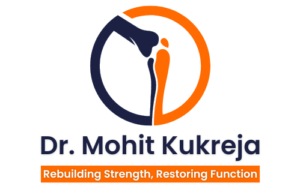Complex Fractures, Non-Union, and Malunion
1. Understanding Complex Fractures
Complex fractures are severe breaks in bones that often involve multiple fragments, extensive soft tissue damage, and sometimes joint involvement. These types of fractures can significantly impact a patient’s mobility and quality of life, requiring specialized treatment to ensure proper healing.

Causes of Complex Fractures
- High-Impact Trauma: Car accidents, falls from significant heights, or sports injuries.
- Bone Health Issues: Conditions like osteoporosis that weaken bones.
- Repetitive Stress: Continuous strain on bones, common in athletes and manual laborers.
Symptoms of Complex Fractures
- Severe Pain: Intense pain at the fracture site.
- Swelling and Bruising: Notable inflammation and discoloration around the injury.
- Deformity: Visible misalignment or abnormal appearance of the affected area.
- Impaired Mobility: Difficulty or inability to move the injured limb.
2. Non-Union and Malunion Fractures
Non-Union
A non-union fracture occurs when a broken bone fails to heal properly or within the expected timeframe. This can lead to chronic pain, instability, and functional impairment.
Causes of Non-Union
- Poor Blood Supply: Inadequate blood flow to the fracture site.
- Infection: Infection at the fracture site impeding healing.
- Inadequate Stabilization: Insufficient immobilization during the healing process.
- Smoking and Medical Conditions: Factors like smoking, diabetes, and other health issues that affect healing.
Symptoms of Non-Union
- Persistent pain and tenderness.
- Swelling that does not subside.
- Limited mobility or weakness in the affected limb.
Malunion
Malunion occurs when a fractured bone heals in an incorrect position, leading to deformity and dysfunction.
Causes of Malunion
- Improper Alignment: Incorrectly aligned bone fragments during initial treatment.
- Early Weight Bearing: Prematurely stressing the healing bone.
- Inadequate Treatment: Insufficient or inappropriate fracture management.
Symptoms of Malunion
- Visible deformity or abnormal alignment.
- Chronic pain and discomfort.
- Functional impairment and difficulty using the affected limb.
Diagnosis of Complex Fractures, Non-Union, and Malunion
A comprehensive diagnostic process includes:
- Medical History Review: Assessing past injuries, medical conditions, and lifestyle factors.
- Physical Examination: Evaluating pain, swelling, and deformity.
- Imaging Tests: X-rays, CT scans, or MRI to determine the extent and nature of the fracture.
Treatment Options
Non-Surgical Treatments
For some cases, non-surgical methods can effectively manage fractures:
- Immobilization: Using casts, braces, or splints to keep bones in place.
- Physical Therapy: Exercises to restore strength and mobility.
- Bone Stimulation: Electrical or ultrasonic stimulation to promote healing.
Surgical Treatments
When non-surgical methods are insufficient, surgical intervention may be required:
- Open Reduction and Internal Fixation (ORIF): Aligning bone fragments and securing them with metal plates, screws, or rods.
- Bone Grafting: Transplanting bone tissue to aid in healing and provide structural support.
- External Fixation: Stabilizing bones using an external frame.
- Revision Surgery: Correcting previous treatments that resulted in non-union or malunion.
Schedule Your Consultation
If you or a loved one is dealing with a complex fracture, non-union, or malunion, don’t hesitate to seek expert care. Contact us today to schedule a consultation and learn more about how we can help you achieve a full recovery.
